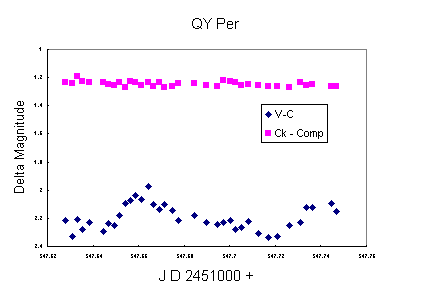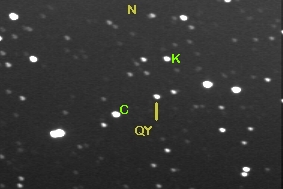 |
This SU UMa type cataclysmic variable had a superoutburst after Christmas 1999 and a round-the-world photometry campaign was conducted. This ad hoc QY Persei team coordinated efforts through VS Net Alert E-mails. This service is run by Taichi Kato. In the image, the Comparison star (C) and Check (K) star are denoted along with QY Per. This image is a composite of 45 images totaling 12 minutes of exposure. Elongations of the star images are due to tracking errors. An IAU Circular has been issued for this outburst which established QY Per as a member of the SU UMa class of dwarf novae. |
Superhump light curve by the VSNET QY Per collaboration team:
Taichi Kato, Makoto Uemura, Gianluca Masi, Lew Cook, Katsura Matsumoto,
Lasse Teist Jensen, Alessia Cassetti and Brian Martin.
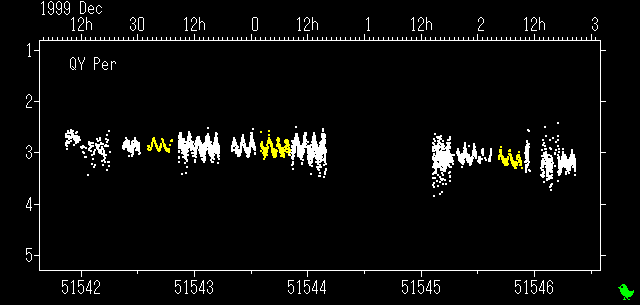
Contributions of CBA California are shown in yellow in the curve and are also reproduced below (as 12 frame averages in the second curve).
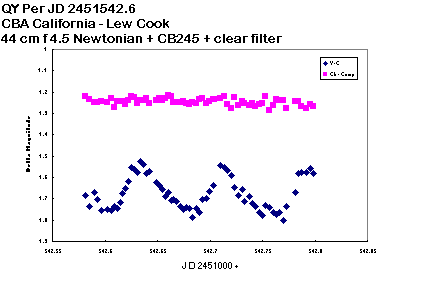
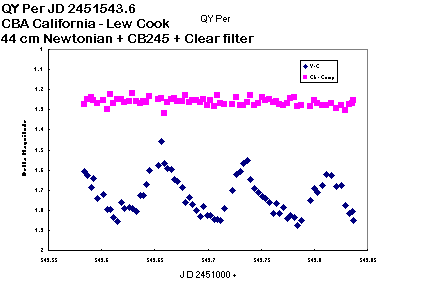
The following night, New Year's Eve, was cloudy.
A third night - January 1-2, 2000 was interrupted by clouds, but it is apparent that the superhumps are still going strong. the period of the superhumps is 0.0785 days both using this data and the combined data of the group effort. The CBA California period was determined using the AVE software by Rafael Barbera of GEA.
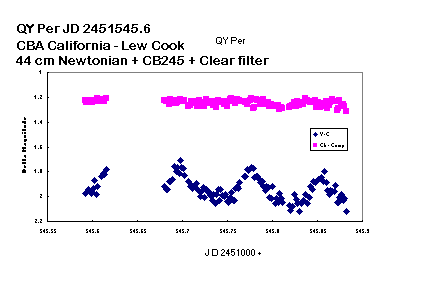
The fourth night was January 2-3, 2000. Superhumps still present. As the star fades, the data quality decreases as evidenced by the increasing scatter in the curve.
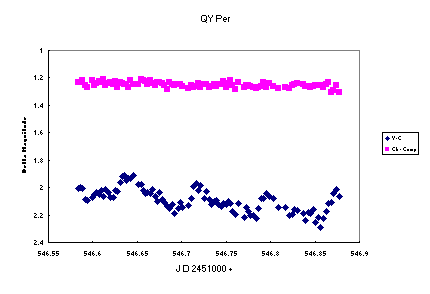
The fifth night was January 3-4, 2000. Superhumps still present. Clouds delayed the start of the observations and ended the run 3 hours later as well. The following night was cloudy. The data from the fifth night is ploted below.
